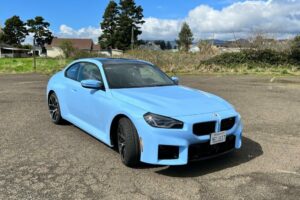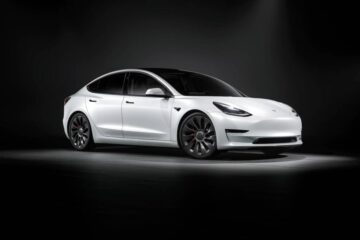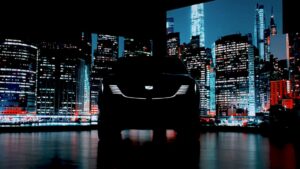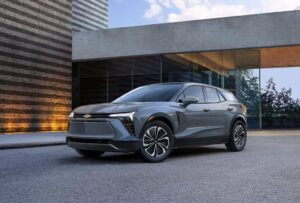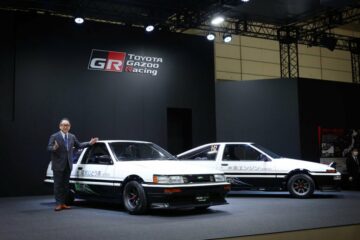From the entry-level PEAR SUV to the 1,000 horsepower Ronin hypercar, startup Fisker rolled out an assortment of new battery-electric vehicles Thursday night it promises to bring to market over the next several years.
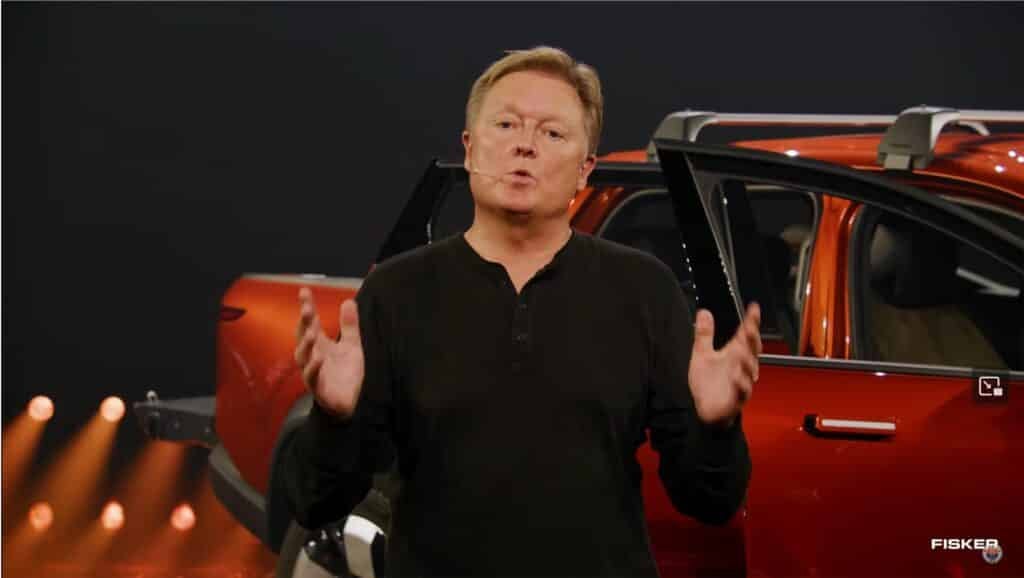
The splashy YouTube event, “starring” company founder Henrik Fisker, set social media ablaze, and got a buy-in from investors in, as well, obscuring the fact that, as of Friday morning, Fisker’s eponymous EV manufacturer has so far delivered less than a dozen of its initial offering, the Ocean SUV.
Longer term, the one-time Aston Martin designer said, “I want to get up to a million vehicles a year.”
Where EVs once slotted into a narrow range of body styles, they’re rapidly starting to plug into other niches, and Fisker is clearly aiming to cover a number of bases. Here’s a look at what Thursday’s event saw him roll out:
Fisker PEAR
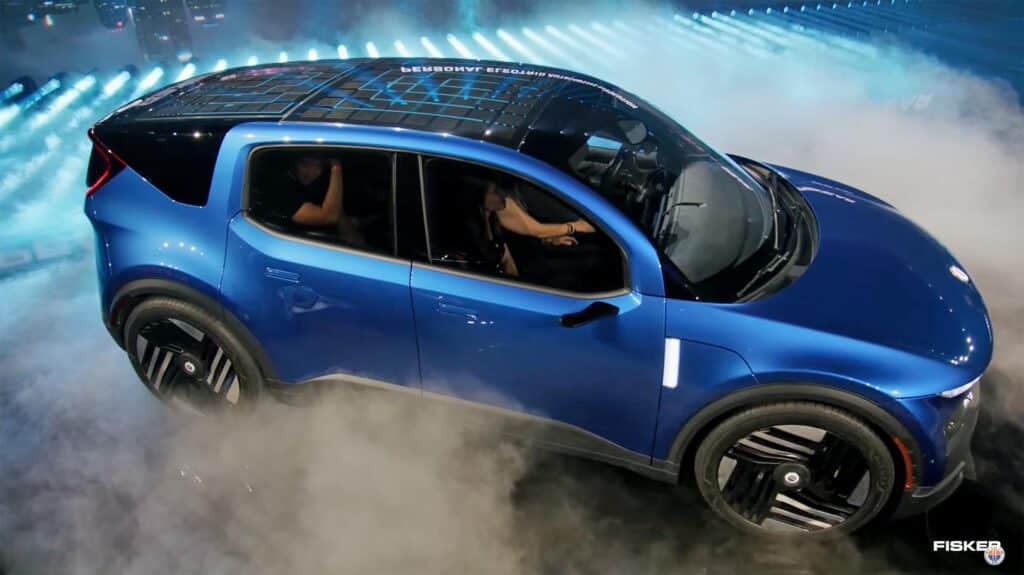
Short for “Personal Electric Automotive Revolution,” the PEAR is meant to answer the mounting calls for an affordable battery-electric vehicle. It will start, said the CEO, at just $29,900. And, because it will be assembled in the U.S. using locally sourced batteries, PEAR should qualify for up to $7,500 in federal incentives, bringing the base cost down to $22,400.
To get down that low, Fisker claims to be developing a variety of methods to reduce manufacturing costs. And PEAR will use something like 35% fewer parts than comparable products. One example: a “symmetric” armrest that can be used on all four doors.
But this isn’t going to be the all-electric equivalent of an econobox, Fisker insisted during a nearly 90-minute presentation Thursday. He emphasized, “Each Fisker (model) has to have at least four unique features that are either best-in-class, or which nobody else has.”
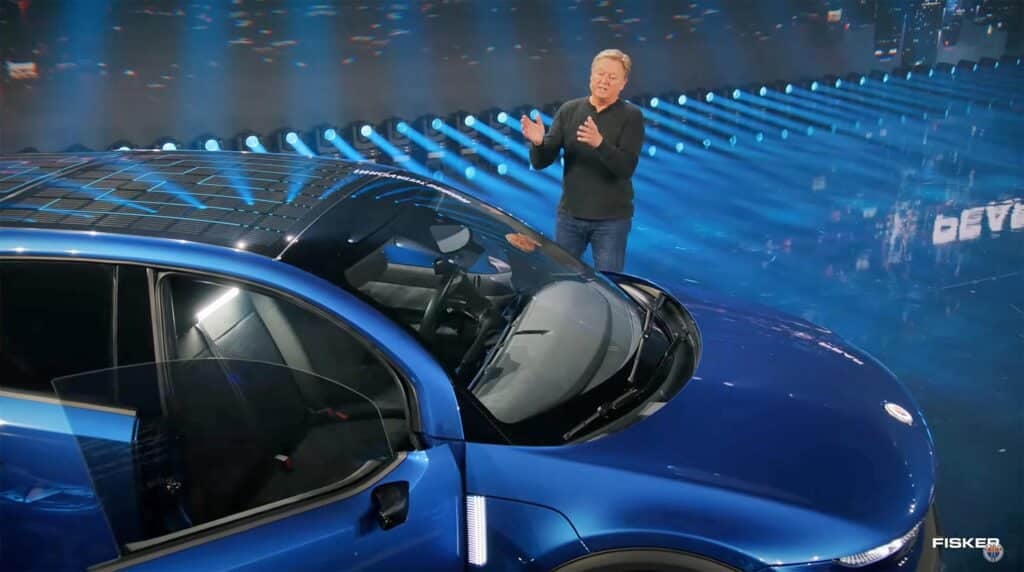
With PEAR, price is just one of those features. Another is the “Houdini” tailgate which, rather than swinging open, disappears into the vehicle’s body.
Then there’s the Fisker Blade, a new, super-fast computer system that will be used in all future Fisker models, from PEAR to the Ronin hypercar. (More on that shortly.)
One of the oddest features — at least from the name Fisker came up with — is the Froot, or “Front Boot,” using the European term, “boot” for a trunk. But it’s unclear how this will differ from the frunks, or front trunks, now in Teslas and many other EVs.
In a surprise move, PEAR will bring back a design feature we haven’t seen in quite some time: a front bench seat, allowing it to squeeze in six occupants, though a more conventional five-seat layout will also be offered.
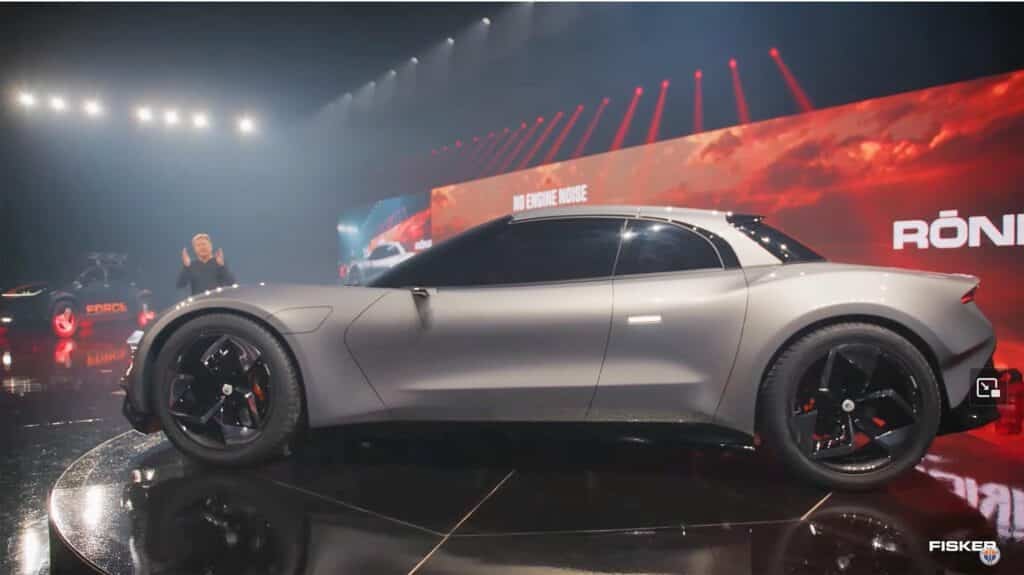
Expect to see the Fisker PEAR on sale by “mid-2025,” Henrik Fisker said.
Fisker Ronin
At the other end of the spectrum — at a starting price of $385,00 — is the Fisker hypercar. It would be a true rarity, a four-door convertible with a carbon-fiber folding hardtop. Ronin is more of a grand tourer, or GT, than a conventional sports car. If anything, it might bring to mind the old Mazda RX-8, especially when you see the “butterfly,” or reverse-opening rear doors that, Fisker claims, will make it easy to squeeze in five people.
Much more exotically sculpted than the current Ocean, or the upcoming PEAR, it’s clear that the Danish-born Henrik Fisker flexed his styling muscles on the new Ronin. “I wanted to create a timeless, modern EV, something that can really make your heart pump,” he said.
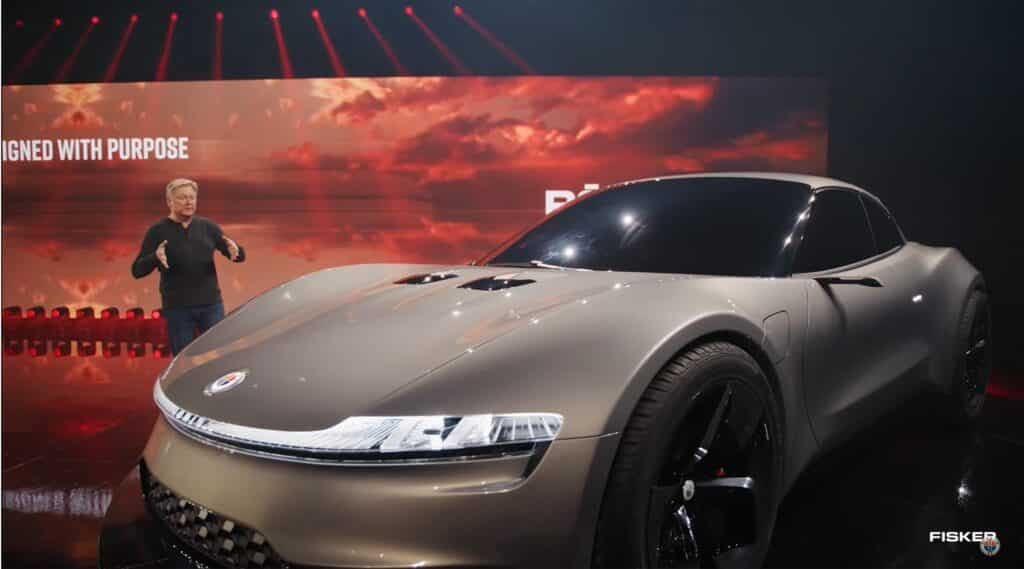
The design features both a long hood and rear deck, somewhat unusual EV features. The single front lightbar, with striped LED accents, meanwhile, are set to become signatures that Fisker plans to use on all future models.
But it’s what’s underneath the skin that his engineering team focused on. Ronin features a three-motor drivetrain capable of punching out “over” 1,000 horsepower. That should give it the muscle needed to launch from 0-60 in a mere 2 seconds, Fisker promised.
As to those four unique features: one goal is to integrate the battery cells directly “into the structure of the body,” he revealed, rather than packing them together underneath the load floor. How that will play out is unclear, as it could permit an even lower ride height. But moving the batteries up into the body could raise Ronin’s center of gravity.
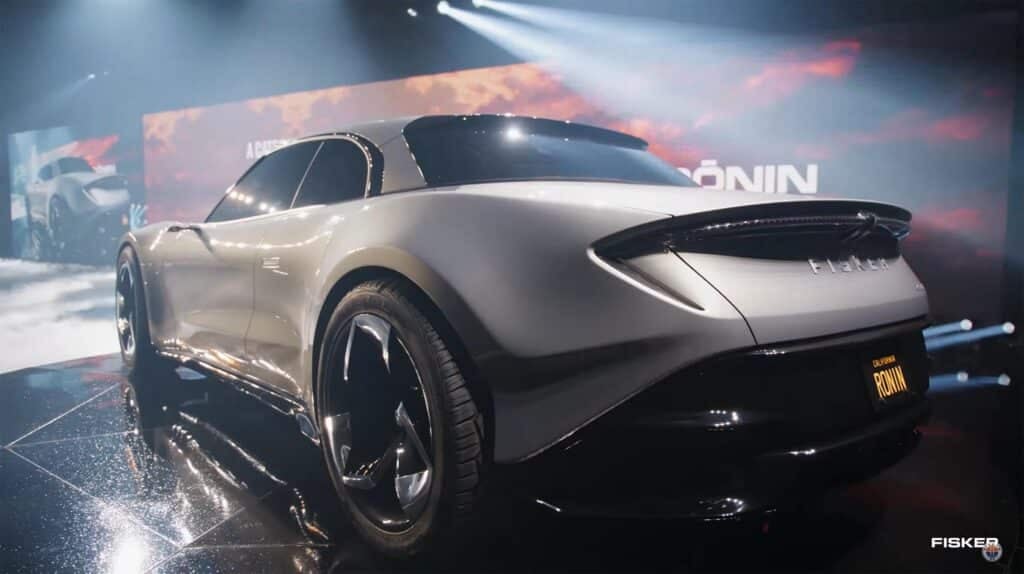
The approach should free up more space for batteries, however, and they will be needed if Ronin is to meet the goal of delivering up to 600 miles per charge, enough, Fisker suggested, to let you cruise from Los Angeles to Napa Valley with charge left over.
Fisker is promising to put Ronin into production by “toward the end of 2025.”
Fisker Force E
This isn’t an entirely new model, but an upgrade package for the original Fisker Ocean that promises to make the electric SUV a serious off-roader. And Force E comes along at just the right time. Automakers, in general are racing to respond to a post-COVID surge in demand for vehicles that can take owners far off pavement.
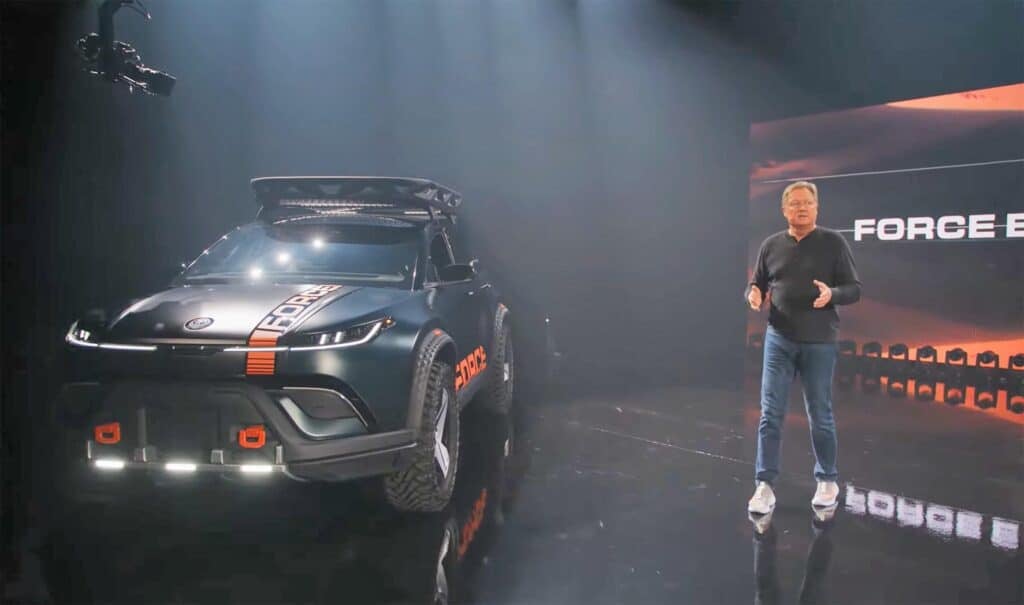
Jeep has already demonstrated the potential benefits, its Wrangler and Grand Cherokee models are the two best-selling plug-in hybrids — of any form — now on the U.S. market. They allow driving in near silence when out in the woods. And their electric motors provide solid, smooth low-end torque, perfect for rock climbing. Those would be benefits Force E can take to a new level.
The package adds a number of critical features to the Ocean. First, the electric SUV’s height is raised. It gets underbody protection that includes front and rear skid plates. The bumpers are revised to enhance approach and departure angles, and the Force E package adopts 33-inch tires on 20-inch wheels.
Unique dampers will help soften the blow of riding off-road. No details were revealed but these could be electronically controlled. A roof basket is also going to be part of the package.
The downside, of course, is that the added mass and likely impact on aerodynamics will reduce range a bit — though that was something Fisker conveniently avoided discussing Thursday night.
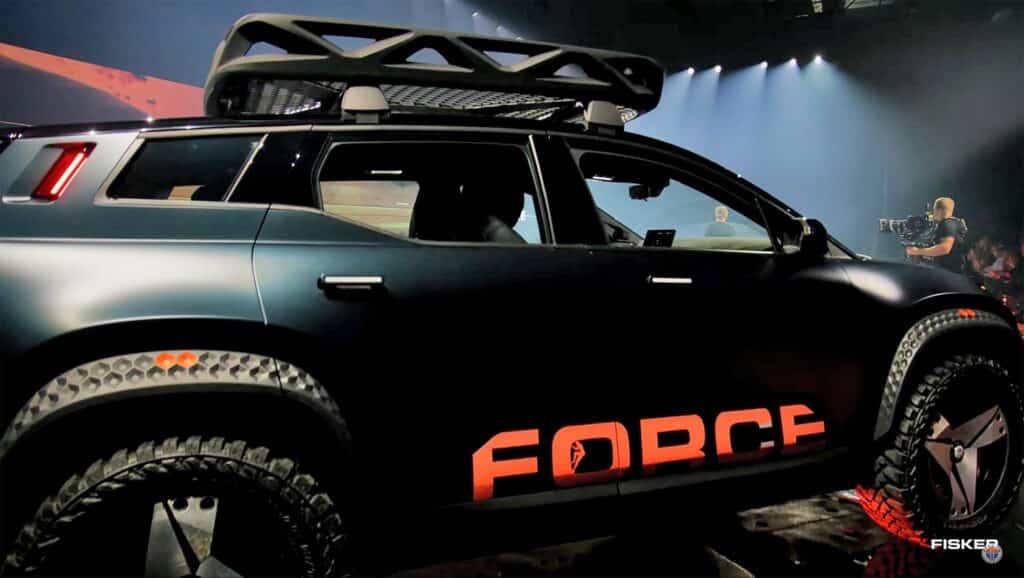
Fisker has yet to reveal pricing, but did note that those who hold a reservation for the conventional Fisker Ocean can upgrade to the Force E package. Since it’s really just a modified version of Ocean, it will be the first of the new models out of the box, going on sale during the first quarter of 2024.
Fisker Alaska
Adding a final touch of theatricality to Thursday night’s presentation, Fisker hinted he had a last-minute addition to the YouTube showcase. Of course, the Alaska was part of the program all along, but it did deliver quite a shock when the all-electric pickup rolled out.
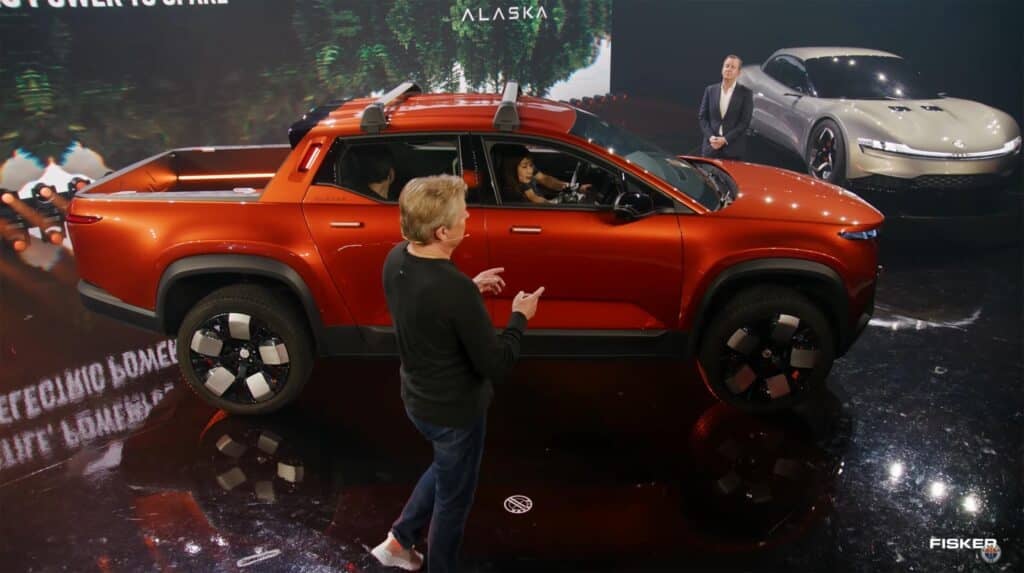
Of all the Fisker products, Alaska might be considered the most conventional, at least at first glance. But a closer inspection revealed some promising features. Closer to a midsize rather than full-size pickup, nonetheless it features a large, 4.5-foot bed. But that jumps to more than seven feet if you open up the “Houdini” midgate and fold down the rear passenger seats. With the large tailgate folded down, as well, Alaska can handle cargo up to 9.5 feet long.
Fisker described the new truck as the “Ferrari of pickups,” but failed to offer any specifics about performance. He did note that range will run anywhere from 230 to 340 miles per charge, suggesting there likely will be various drivetrain options.
That is, of course, nothing unique. Ford’s Lightning and Rivian’s R1T both have various range and performance options. Indeed, that will be the norm as more and more all-electric pickups come to market, starting this year with the Chevrolet Silverado EV and others, like the Ram 1500 REV, to follow in 2024. By TheDetroitBureau.com’s count, there should be something on the order of at least a dozen EV pickups in production by mid-decade, so the Fisker Alaska will have plenty of competition.
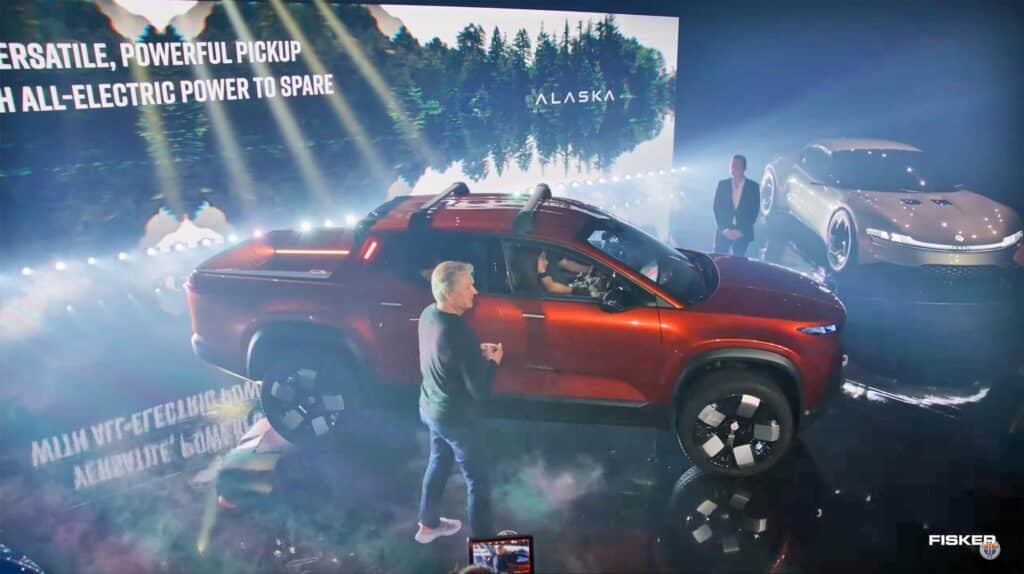
Fisker claims the truck will make extensive use of recycled materials, like old pop bottles. And it will be highly recyclable itself when it reaches the end of its life. He also claimed it will be the lightest EV pickup.
The base price is expected to be $45,400 — or $37,900 after federal incentives — which could give it a leg up on some of the more costly alternatives currently or soon to go on sale. Expect to be able to drive the Fisker Alaska home, the company promised, sometime in 2025.
Fisker Blade
As mentioned earlier, Fisker has developed its own supercomputer, a box not much bigger than two stacked-up laptops, capable of the blazing speed of 6.2 teraflops, or 6.2 trillion floating point calculations per second. And it will be 25% more energy efficient than similar hardware, the automaker’s chief technology officer suggested.
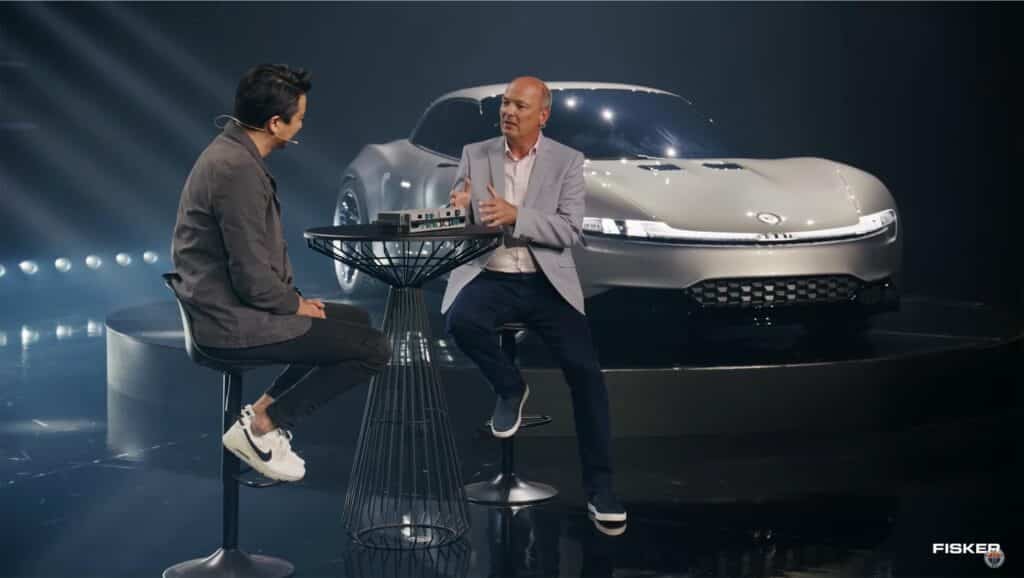
What could be equally significant is that Fisker plans to shift away from the conventional approach where dozens of microprocessors are used throughout the vehicle, pretty much one for every electrical and electronic device. Instead, it will rely on a primary Blade and another as backup. This approach isn’t entirely new, Tesla showing the world how that’s done. But Fisker claims its device will have a major advantage in processing power.
Production and Reservations
Fisker’s production line has been slow to start up. It had hoped to roll out as many as 1,700 Ocean SUVs during the second quarter of 2023. It managed just 1,022 — and the company reduced its guidance for the rest of the year.
That’s not entirely a surprise. Tesla had significant launch delays, especially when it went through “production hell” with the Model 3 sedan. And Cadillac is only now ramping up assembly operations for the Lyriq it debuted late last year.
Still, with only 12 Ocean’s delivered so far — all in Europe — it’s a question whether Fisker will be able to meet the launch targets it set for all the new models revealed Thursday night.
But you won’t have to wait to get in line. The automaker already has begun taking orders online for the Fisker PEAR, Ronin, Alaska and Force E package.
- SEO Powered Content & PR Distribution. Get Amplified Today.
- PlatoData.Network Vertical Generative Ai. Empower Yourself. Access Here.
- PlatoAiStream. Web3 Intelligence. Knowledge Amplified. Access Here.
- PlatoESG. Automotive / EVs, Carbon, CleanTech, Energy, Environment, Solar, Waste Management. Access Here.
- BlockOffsets. Modernizing Environmental Offset Ownership. Access Here.
- Source: https://www.thedetroitbureau.com/2023/08/hypercar-pickup-sub-30k-cuv-ev-maker-fisker-unveils-expansive-near-term-product-plan/
- :has
- :is
- :not
- :where
- $UP
- 000
- 1
- 12
- 2023
- 2024
- 2025
- 35%
- 500
- 700
- 9
- a
- Able
- About
- added
- addition
- Adds
- ADvantage
- affordable
- After
- Aiming
- alaska
- All
- all-electric
- allow
- Allowing
- along
- already
- also
- alternatives
- an
- and
- Angeles
- Another
- answer
- any
- anything
- anywhere
- approach
- ARE
- AS
- assembled
- Assembly
- assortment
- At
- automakers
- automotive
- avoided
- away
- back
- Backup
- base
- basket
- batteries
- battery
- BE
- because
- become
- been
- begun
- benefits
- bigger
- Bit
- BLADE
- BLAZING
- blow
- body
- both
- Box
- bring
- Bringing
- Bureau
- but
- by
- Cadillac
- Calls
- came
- CAN
- capable
- car
- Cargo
- Cells
- Center
- ceo
- charge
- Chevrolet
- chief
- chief technology officer
- claimed
- claims
- clear
- clearly
- Climbing
- closer
- come
- comes
- company
- comparable
- competition
- computer
- considered
- controlled
- conventional
- Cost
- costly
- Costs
- could
- course
- cover
- create
- critical
- cruise
- CTO
- Current
- Currently
- debuted
- delays
- deliver
- delivered
- delivering
- Demand
- demonstrated
- described
- Design
- Designer
- details
- developed
- developing
- device
- DID
- differ
- directly
- discussing
- done
- doors
- down
- downside
- dozen
- dozens
- drive
- driving
- during
- e
- Earlier
- easy
- efficient
- either
- Electric
- Electronic
- electronically
- else
- emphasized
- end
- energy
- Engineering
- enhance
- enough
- entirely
- entry-level
- equally
- Equivalent
- especially
- Europe
- European
- EV
- Even
- Event
- Every
- example
- expansive
- expect
- expected
- extensive
- fact
- Failed
- far
- Feature
- Features
- Featuring
- Federal
- Feet
- fewer
- final
- First
- five
- floating
- Floor
- focused
- follow
- For
- Force
- form
- founder
- four
- Free
- Friday
- from
- front
- future
- General
- get
- Give
- Glance
- Go
- goal
- going
- gravity
- guidance
- had
- handle
- Hardware
- Have
- he
- Heart
- height
- help
- highly
- him
- his
- hold
- Home
- hood
- How
- However
- HTTPS
- if
- Impact
- in
- Inc.
- Incentives
- includes
- initial
- instead
- integrate
- into
- Investors
- IT
- ITS
- itself
- jpg
- jumps
- just
- just one
- laptops
- large
- Last
- Last Year
- Late
- launch
- Layout
- least
- Led
- left
- less
- Level
- Life
- lightning
- like
- likely
- Line
- live
- load
- locally
- Long
- Look
- los
- Los Angeles
- Low
- lower
- major
- make
- maker
- managed
- Manufacturer
- manufacturing
- many
- Market
- Martin
- Mass
- materials
- max-width
- meant
- Meanwhile
- Media
- Meet
- mentioned
- mere
- methods
- might
- million
- mind
- model
- models
- Modern
- modified
- more
- morning
- most
- Motors
- move
- moving
- much
- name
- Near
- nearly
- needed
- New
- next
- night
- no
- nothing
- now
- number
- ocean
- of
- off
- offer
- offered
- offering
- Officer
- Old
- on
- once
- ONE
- online
- only
- open
- Operations
- Options
- or
- order
- orders
- original
- Other
- Others
- out
- over
- own
- owners
- package
- part
- parts
- People
- per
- perfect
- performance
- Pickup
- plan
- plans
- plato
- Plato Data Intelligence
- PlatoData
- Play
- Plenty
- plug
- Point
- pop
- potential
- power
- presentation
- pretty
- price
- pricing
- primary
- processing
- Processing Power
- Product
- Production
- Products
- Program
- promised
- promises
- promising
- protection
- provide
- pump
- put
- qualify
- Quarter
- question
- racing
- raise
- raised
- RAM
- ramping
- range
- rapidly
- rarity
- rather
- Reaches
- really
- reduce
- Reduced
- rely
- reservation
- Respond
- REST
- reveal
- Revealed
- Revolution
- Ride
- riding
- right
- Rock
- Roll
- Rolled
- RONIN
- roof
- Run
- s
- Said
- sale
- saw
- Second
- second quarter
- seconds
- see
- seen
- serious
- set
- seven
- several
- shift
- Short
- Shortly
- should
- showcase
- showing
- side
- Signatures
- significant
- Silence
- similar
- since
- single
- SIX
- Skin
- slow
- Smoke
- smooth
- So
- so Far
- Social
- social media
- solid
- some
- something
- somewhat
- Soon
- sourced
- Space
- Spectrum
- speed
- Sports
- Squeeze
- start
- started
- Starting
- startup
- stream
- structure
- styles
- supercomputer
- surge
- surprise
- SUVs
- system
- Take
- taking
- targets
- team
- Technology
- term
- Tesla
- Teslas
- than
- that
- The
- the world
- their
- Them
- There.
- These
- they
- this
- this year
- those
- though?
- three
- Through
- throughout
- thursday
- time
- timeless
- tires
- to
- together
- touch
- Trillion
- truck
- true
- two
- u.s.
- unique
- unique features
- unusual
- Unveils
- upcoming
- upgrade
- use
- used
- using
- Valley
- variety
- various
- vehicle
- Vehicles
- version
- vision
- W
- wait
- want
- wanted
- was
- we
- WELL
- went
- were
- What
- when
- whether
- which
- WHO
- will
- with
- Woods
- world
- would
- year
- years
- yet
- you
- Your
- youtube
- zephyrnet



